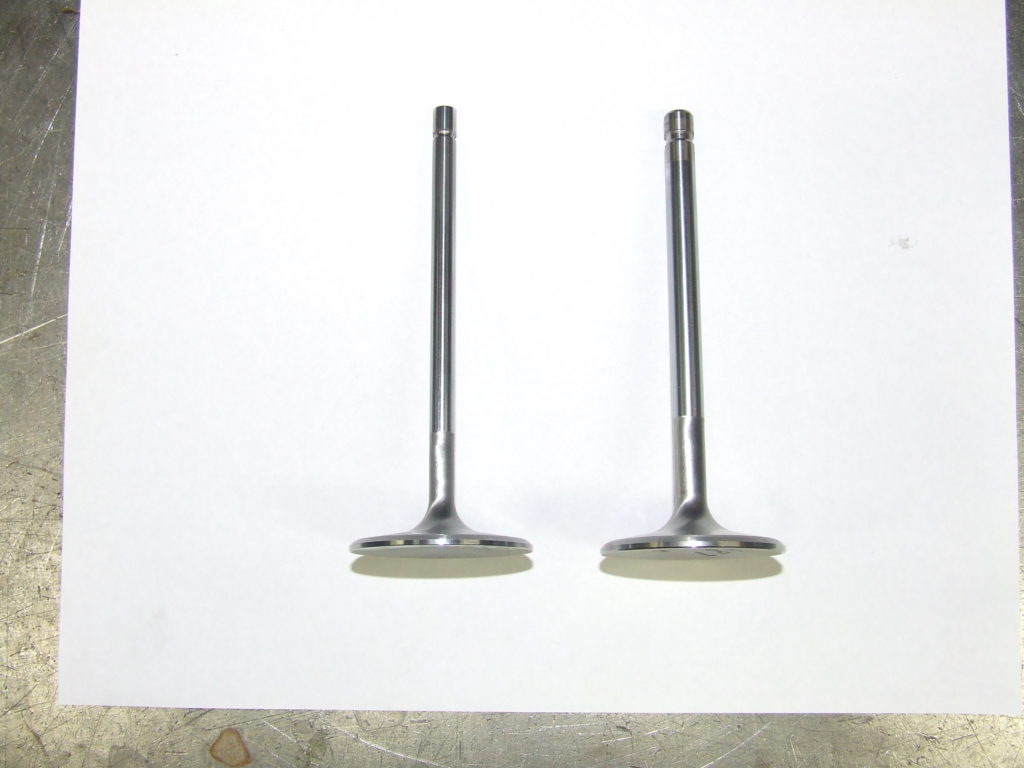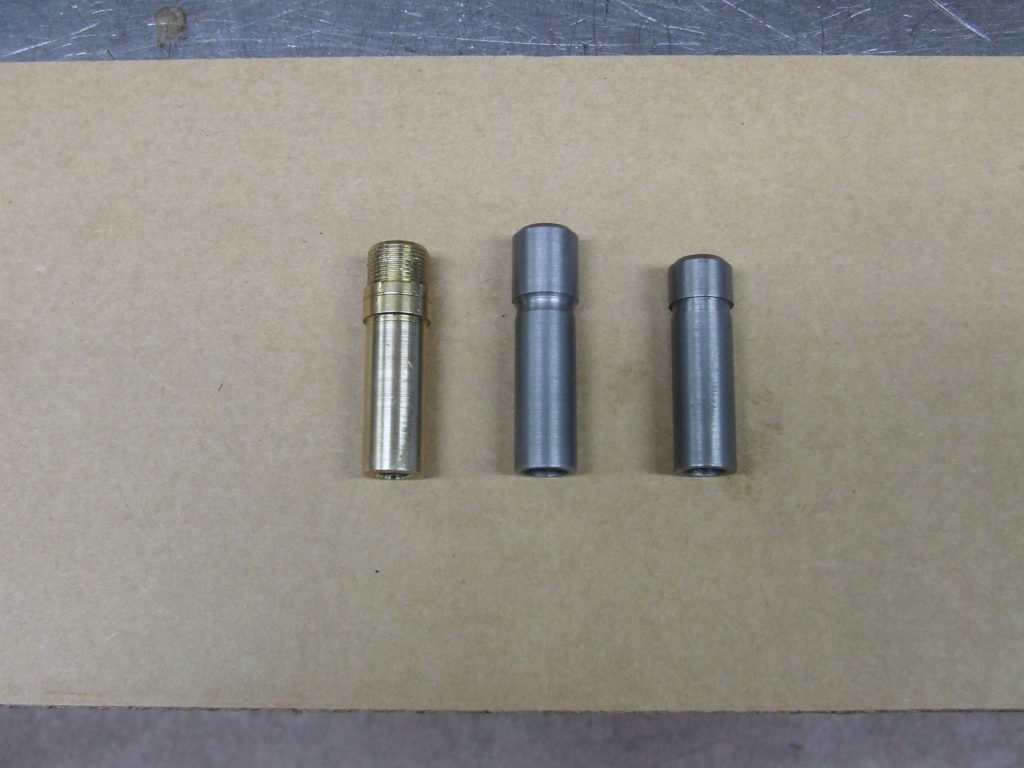Valve Stem Diameter Flow Testing
Air Flow: Fact or Fiction
Question: Does reducing the stem size of a valve increase the air flow?
Most people think that just because the valve stem is smaller, the air flow will increase. Is this fact or fiction?

7 mm stem valve (left); 11/32″ stem valve (right). Which flows better?
An EQ 350I cylinder head with “UnderCover Porting” was our test head of choice. We chose Manley valves for this series of tests because they offer a variety of stem diameters with the same margin and under head angle / radius. Since the valves were identical, except for the stem diameter, we were testing just one change; the stem size. All of the test valves were back cut.
Manley 1.94″ valves used:
7 mm #11236 : 5/16″ #11302: 11/32 straight stem # 11860: 11/32 neck down stem – #11522
In all of our flow testing we strive for accurate, repeatable data that is gathered quickly.
To accomplish this for this series of tests, we made custom valve guides that were fitted for 7 mm, 5/16″ and 11/32″ valve stems. The custom valve guides could be changed by hand while the head was still on the flow bench by sliding the head over to one side. With this setup, we could change from a 7 mm to 5/16″ to 11/32″ stem valve in about 1 minute.
Here are the test results.
Best flowing: 7 mm #11236
Second place: 11/32″ straight stem #11860
Third place: 5/16″ #11302
Last place: 11/32″ neck down stem # 11522
The 7 mm stem size did flow “slightly” better than the 11/32″ straight stem valve.
When we say “slightly” better, we really do mean very slightly. The difference was less than one half of a percent.
Note that the 11/32″ straight stem valve performed better than the 5/16″ stem valve.
The worst flowing valve was the 11/32″ neck down stem valve. The difference between the best flowing valve, 7 mm, and the worst valve, 11/32″ neck down stem, was 2%.
Conclusions: Over the years, we have conducted this type of test on several different types of heads, mostly cast iron small block Chevy heads.
We have never found a significant, measurable, repeatable increase in air flow by reducing the valve stems size. Reducing the stem size does decrease the weight of the valve, which can help acceleration.
_____________________________________________________________________
Remember also that decreasing the valve stem size also reduces the available contact area for the rocker arm. The available contact area is critical for engine running stock type rocker arms, since there is no way to “adjust” the rocker arm geometry like there is on a shaft type rocker arms.
You can’t overlook the “quickly” part of any series of flow tests. The reason it matters so much is that the more time between test, the more inaccurate the flow bench can become. Example; If you are doing something simple like valve testing and for whatever reason, there is, let’s say, 30 minutes between tests, that is time for the flow bench to cool down and the possibility for inaccurate results is increased.
Along with being as little time between tests as possible, it is imperative to conduct the tests in a proven A to B to A series.
Here is how A to B to A tests work.
A – Baseline test with valve #1.
B – Change to #2 valve and flow test.
C – Change to #3 valve and flow test
A – Change back to the baseline #1 valve and flow test.
Flow testing with the baseline test valve after all the other valves have been tested proves the accuracy of the test procedure.
Of, course, “A to B to A” testing can not be used when removing material from ports, since you can not put the material back to recreate you base line. When changing valves this is the only way to test, if you want to be accurate.

7mm, 5/16″ & 11/32″ slip fit guides
7 mm, 5/16″ & 11/32″ slip fit valve guides allowed us to change valve stem diameter quickly and without removing the cylinder head from the flow bench fixture.
